Diesel Directional
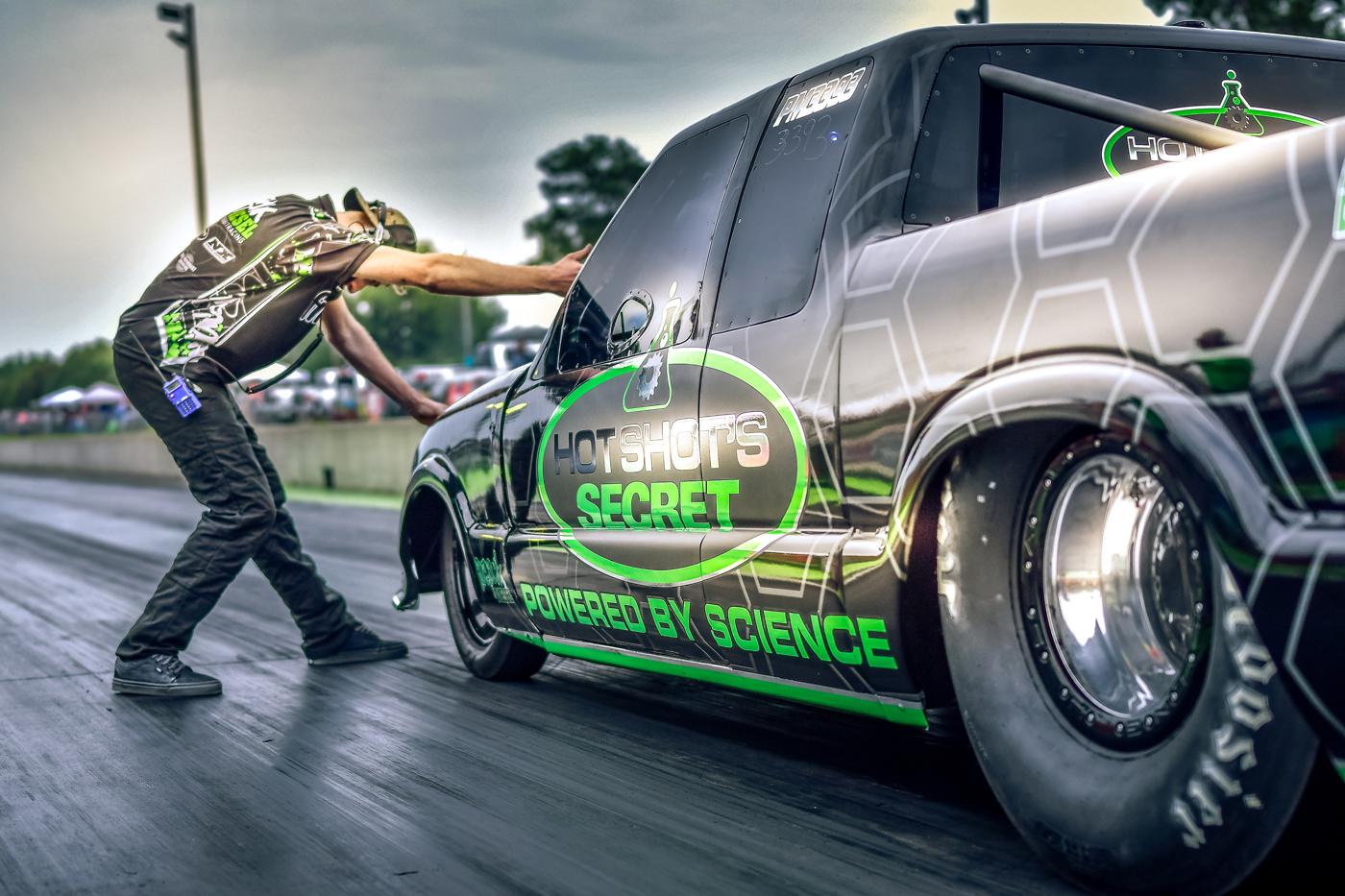
Photo courtesy of Firepunk Diesel
Competitors are laying down times on par with their gasoline-powered counterparts. We uncover more than a dozen reasons why.
Once widely regarded as a quirky niche segment of motorsports, diesels now have the performance to sit shoulder-to-shoulder with more established forms of racing.
“Ten or 20 years ago, diesel racing was a novelty,” observed Jared Alderson of Kill Devil Diesel, Poplar Branch, North Carolina. “It was almost more of an exhibition, like, ‘All right, here comes the smoke show, then we’ll get back to real racing.’”
Fast forward to the present, and the snickering has stopped. Diesel racers are laying down ETs within striking range of the quickest gas cars. That’s brought newfound respect to the category, fueling an increase in mainstream attention for diesel as yet another option for going fast and competing.
As impressive as the performance is among today’s top-tier diesel racers, it’s worth noting that these racers are accomplishing these things with a tiny fraction of the aftermarket support that the gas-engine community has enjoyed for decades. The stunning performance of modern diesel race cars has required determination, ingenuity, and creativity—not to mention, of course, lots of money.
To find out where this vibrant, relatively young performance segment is headed, we talked with leading experts in diesel performance. They gave us truckloads of insight into the technology, culture, and business of diesel racing. From that, we picked the 15 most significant trends shaping diesel motorsports in the near future.
Mid-3-Second Diesels
While the gas drag-racing community pursues gains in hundredths of a second or smaller, diesel racers are shattering records by whole tenths of a second. For example, Firepunk Diesel’s Cummins-powered Chevrolet S-10 Pro Mod steadily marched its way down the four-second eighth-mile range in a short period. Then, in 2021, it set a new record with a blistering 3.99 pass—the first diesel to break the four-second mark. This trend is sure to continue, according to our sources.
“Some of Firepunk’s future plans I can’t publicly release quite yet,” said Kyle Fischer of Lubrication Specialties, Mt. Gilead, Ohio. “But there’s no reason why they can’t get into the 3.7s and 3.6s, where all the fastest gas cars in the world are. And it’s coming soon.”
“It’s like Top Fuel drag racing,” said Dan Scheid of Scheid Diesel, Terre Haute, Indiana. “You’d think they would have reached a peak by now, but they haven’t. I believe it’s the same thing in the diesel market. I don’t think there’s going to be a limiting factor on horsepower for diesels. I had this conversation back in 1974, and it’s still going.”
Purpose-Built Chassis
Perhaps one of the most startling facts about the recent increases in diesel racing performance is that, so far, it’s been done with relatively little attention given to chassis development. Most racers in diesel’s top ranks are using modified stock frames or castoff gas-car chassis. This is likely to change soon.
“Going lighter is definitely the trend,” observed Alderson. “You can race a 7,000- or 8,000-pound truck. Guys do it. It’s very popular. But it’s really hard on parts.”
“The record-setting Firepunk S-10 we sponsor uses an old super stock chassis from about 22 years ago,” added Fischer. “That stuff has been kind of an afterthought because we were just trying to catch the gas guys in power and speed. Now that we’re there, some very unique chassis are being built for these platforms.
“The biggest difference between a gas chassis and one for diesel is the weight bias,” continued Fischer. “Even with a full billet aluminum block, diesel blocks are so large that the weight is just unlike what anyone’s used to seeing in a regular Pro Mod chassis. Now, some of the best chassis builders in America are getting requests for diesel platforms. It’s like starting from scratch for them. I have been told they have to completely redo what they have done in the past.”
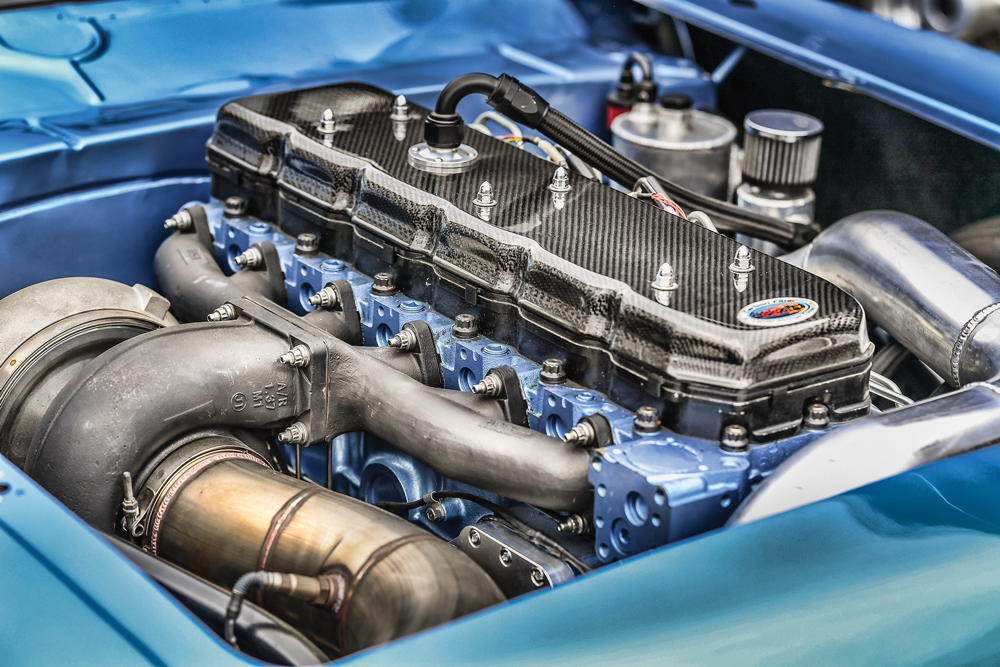
Greater Precision in Tuning
Diesel performance is still largely uncharted territory; it simply doesn’t have as many proven standards and baseline methods as gas engines. But as the segment gets more established, it’s getting more sophisticated about tuning, according to our sources.
“We’re pushing more of our customers to look at air-fuel ratios,” said Alderson. “Traditionally that hasn’t really been a big topic of conversation in the diesel community, which is funny, because that’s such a key component with gas racers. But now diesel racers are getting the engine calibration under much better control, so components live better. It’s been absolutely a critical evolution and continues to be looking forward.”
Less Turbo, More Nitrous
Diesels produce such massive amounts of torque that it can actually be counterproductive in drag racing. Now racers are seeking ways to reduce and control that torque more effectively. One way to do so is to use one instead of two turbos, and then add plenty of nitrous to make up the difference. This combination is quickly becoming a standard approach for diesel drag racers.
“A 2,000-horsepower diesel engine is typically making close to 3,000 lbs./ft. of torque,” explained Alderson. “And we don’t necessarily want that much. So a lot of guys have gone away from big compound turbos that make 200 pounds of boost. Instead, they’re going back to a medium or large single turbo with a bunch of nitrous. The nitrous is a lot more manageable. With a nitrous controller and a timer, you can really control the power band a lot easier than you can with just boost.”
Stronger Components
As horsepower climbs, so does the component carnage, just like in the gas-engine world. Contributing to the damage are ever-increasing rpm’s being run by diesel racers, which is another means of reducing the over-abundance of torque produced by these engines.
“One of the most common ways to control torque in a diesel is just to increase the rpm band of the engine,” said Alderson. “But then that inherently stresses components. The rotating assemblies on diesels are so heavy that it becomes a factor. And then, there’s the valvetrain. People think of these as 3,000–4,000 rpm engines. But as guys spin 6,000 rpm going down the track, the factory valvetrain becomes largely insufficient.
“At the same time, diesels have a lot of cylinder pressure,” continued Alderson. “Some of the competition diesels approach what Top Fuel dragsters see for cylinder pressure. So when exhaust valves open, they have to overcome many thousands of psi of cylinder pressure. With that environment, we find that the factory rockers just aren’t adequate. So we’re working with Jesel to develop an exclusive line of rocker arms and valvetrain components.”
“You’re starting to see billet blocks and things like that being offered for diesels,” added Ivan Snyder of Fluidampr, Springville, New York. “That trend will probably continue, especially as diesel becomes a bigger market for manufacturers, and it makes sense to come out with products for it.”
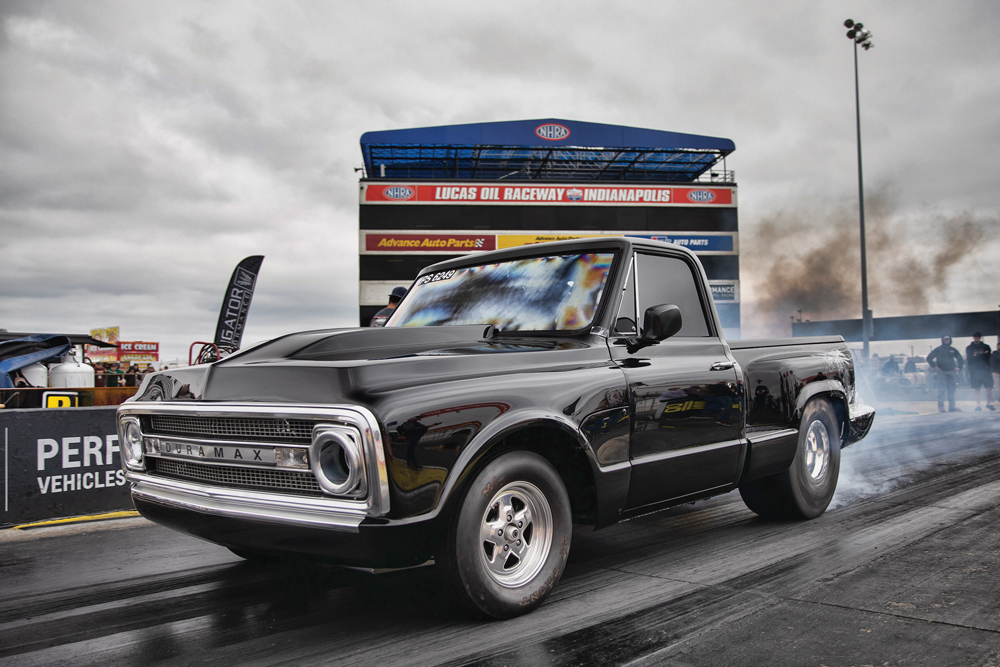
Superchargers Instead of Turbos
Several engine builders are experimenting with various types of superchargers instead of turbos on diesel engines. Although much development remains before such a setup would be a viable choice for a competition engine, the setup could prove highly effective in monster truck competition, where massive torque is beneficial, but immediate throttle response is essential. Even in drag racing, such a system has potential advantages.
“A lot of diesel guys are struggling with throttle response,” said Alderson. “They’ve gone away from compound turbos, and they end up with a giant single turbo in a competition setting—they have to use nitrous to get the turbo spooled up. If they have to lift and get out of the throttle pedal going down the track, they lose boost, and it sniffs the turbo out. But from a throttle-response standpoint, blowers are awesome. You don’t have any of those problems.”
Emission Control
Many people still associate diesel racing with vast clouds of black smoke, which was the norm not all that long ago. Now, more efficient tuning, extensive use of nitrous, and an increased emphasis on environmental responsibility are cleaning things up. Many in the industry say that doing so is necessary to preserve the future of diesel motorsports.
“Ten or 15 years ago, the diesel performance industry got themselves in trouble with guys asking for smoke tunes,” recalled Alderson. “They used a tuning calibration specifically to blast out black smoke when they roll onto the throttle. But that doesn’t put the diesel industry in a good light.
“Ryan Milliken is a good example of doing it right,” continued Alderson. “His Cummins-powered Nova can compete heads-up with gas-engine cars, but it runs very clean. There might be just a teeny puff at the starting line, and then it’s clean as a whistle the rest of the way down the track.”
Factory Power Wars
While mainstream performance enthusiasts have been going gaga for years over the factory muscle-car power wars, there’s also been a parallel fight among OEMs for the most powerful diesel crown. All of the Big Three’s diesels are now rated at 1,000 lbs./ft. of torque or very close to it. And the fight is only going to get more intense, say experts. That gives competitors a lot of ready-made raw material to start with.
“Diesel has quietly been having its own private horsepower war,” explained Jake Hopkins of FASS Diesel Fuel Systems, Marthasville, Missouri. “We’ve seen manufacturers leapfrog each other year after year with bigger torque numbers, bigger horsepower numbers, bigger towing capacity, bigger everything. We don’t see that slowing down anytime soon.”
Young Racers
As the diesel performance segment gains mainstream visibility, it’s attracting plenty of younger fans. That’s always a good sign for the future of an up-and-coming market.
“Our TikTok account, which is categorically a young audience, has exploded in the last year,” said Hopkins. “It’s our biggest platform by almost 50%. We’re seeing a lot of really young kids, 16–17 years old, getting very, very interested in diesel. They’re asking a lot of questions, going to events, and really getting into it. That’s a huge opportunity for companies in the diesel space to start talking to these kids. They might not be customers yet, but two or three years from now, they’ll get their hands on old beat-up trucks, and that’s going to be a big opportunity.”
Old Trucks
As interest in diesel racing grows, older trucks are getting more attention. This is partly because of the usual car-enthusiast desire for something nostalgic and different. But it’s also a matter of supply and demand. Diesel trucks have only recently become an option for performance enthusiasts, so there’s plenty of relatively inexpensive raw material lying around waiting to put on the track.
“We’re seeing a lot of very heavy investment, both from a restoration and a modification perspective on the pre-emission stuff—the older trucks,” observed Hopkins. “It’s been cool to see that because up until a few years ago, a lot of those trucks were almost treated as disposable.”
Common-Rail Conversions
To make older diesel trucks into viable performance machines, there’s been more interest in upgrading dated fuel-system designs to modern common-rail injection, allowing greater power, lower exhaust emissions, and more precise control over fuel delivery.
“Early computer control for diesels—late 1990s, early 2000s—was a little bit primitive,” said Alderson. “So we’re seeing more and more customers experimenting with retrofitting the more desired common-rail fuel system to earlier engines to have better fuel-system control. Right now, they typically utilize a MoTeC ECU to do it, or some combination of factory ECUs. One of our goals is to work with S&S Diesel Motorsport to bring common rail to earlier engine platforms.”
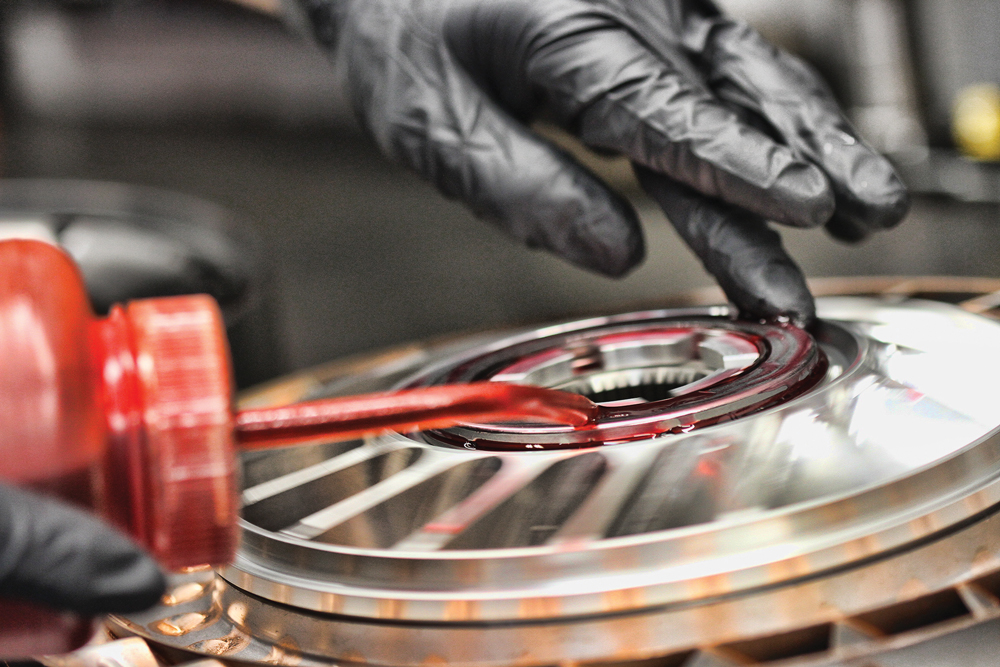
Heads-Up Gas and Diesel Racing
Up to this point, diesel drag racers have primarily competed in their own dedicated events, with diesels lining up only against other diesels. Now that their performance is approaching that of gas cars, we’re seeing more diesels going head-to-head with gas cars, particularly in radial-tire events. Our sources say this trend is likely to grow.
“Ryan Milliken was the first diesel racer to run a radial event,” recalled Fischer. “He had a green diesel-powered Chevy Nova a couple of years ago, and he broke the Internet when he knocked off a gas car with it. Now he has a beautiful diesel 1969 Nova, and he isn’t even running it in diesel events. He’s only running gas events all year long. And I know of another diesel car being built specifically to run a certain class in the gas world.”
More Aftermarket Involvement
Although big-name aftermarket manufacturers don’t appear to be rushing into the diesel market just yet, there will undoubtedly be more companies developing parts as the market grows more financially viable. This will further accelerate the performance improvements of diesel racers and make it easier for average enthusiasts to jump into the sport.
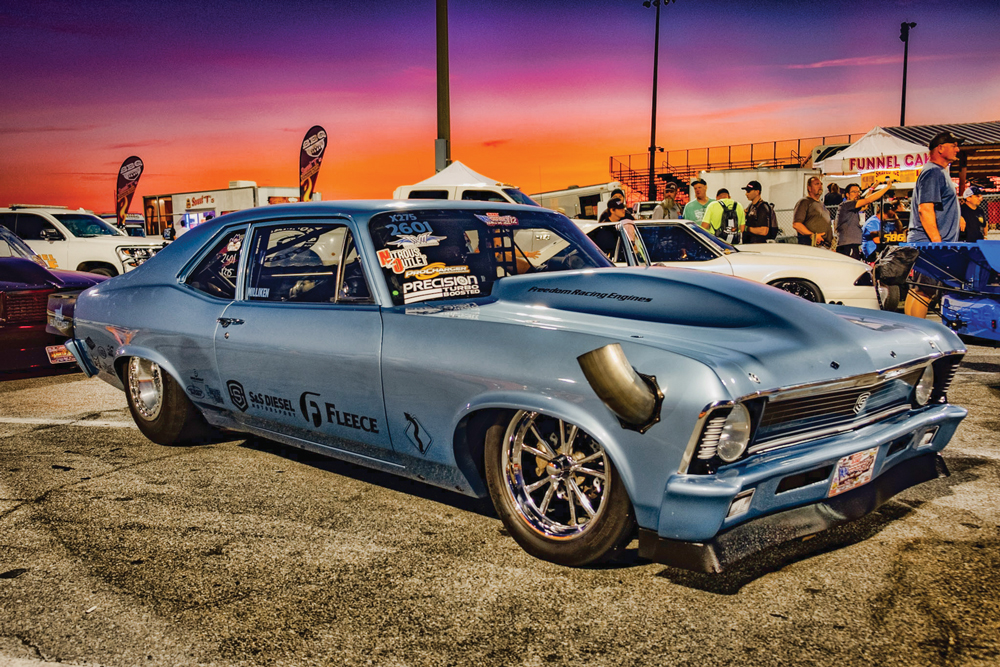
“As more people race diesels, that creates a bigger market for manufacturers,” said Snyder. “At that point, it makes sense for them to start developing parts, and the whole thing just gets bigger.”
More Expense
There are relatively few off-the-shelf parts available for no-holds-barred diesel performance. While this fosters a robust spirit of innovation, creativity, and individuality, it also brings a steep price tag. This is true at the segment’s upper ranks, which are far more mechanically demanding and experimental in their approach. Unfortunately, these high costs will probably continue until more manufacturers jump into the diesel market and absorb some of the development burden.
“With the top racing diesels, everything on the vehicle is a prototype, a one-off,” explained Fischer. “So it’s ridiculously expensive. But it takes pioneers like Firepunk Diesel, who are willing to put in the money, the time, and the effort to advance the industry for the good of all.”
Even More Collaboration
As diesel racers reach unprecedented performance levels, they’re seeing the rewards of their tight-knit, collaborative community. Although they originally banded together in the camaraderie of belonging to an outcast, ‘black-sheep’ form of motorsports, now diesel racers are beginning to move into the mainstream largely because of these joint efforts.
“Compared to the gas world, the diesel community is very tight,” said Fischer. “I think a lot of that’s because diesel racers have been kind of pooh-poohed by the rest of the motorsports community for so long, sort of like, ‘Oh, isn’t that cute. These guys are racing the trucks they pulled their race cars with.’ I think that may have bonded us quite a bit over the years as a community. It really helped us work together for the overall good of the sport. And that’s advanced the technology by leaps and bounds these past few years.”
SOURCES
Callies Performance Products
callies.com
FASS Diesel Fuel Systems
fassride.com
Fluidampr
fluidampr.com
Kill Devil Diesel
killdevildiesel.com
Lubrication Specialties
lubricationspecialties.com
Scheid Diesel
scheiddiesel.com
SCS Gearbox
scsgearbox.com
Wehrli Custom Fabrication
wcfab.com
 MEMBERSHIP LOGIN
MEMBERSHIP LOGIN JOIN PRI
JOIN PRI


